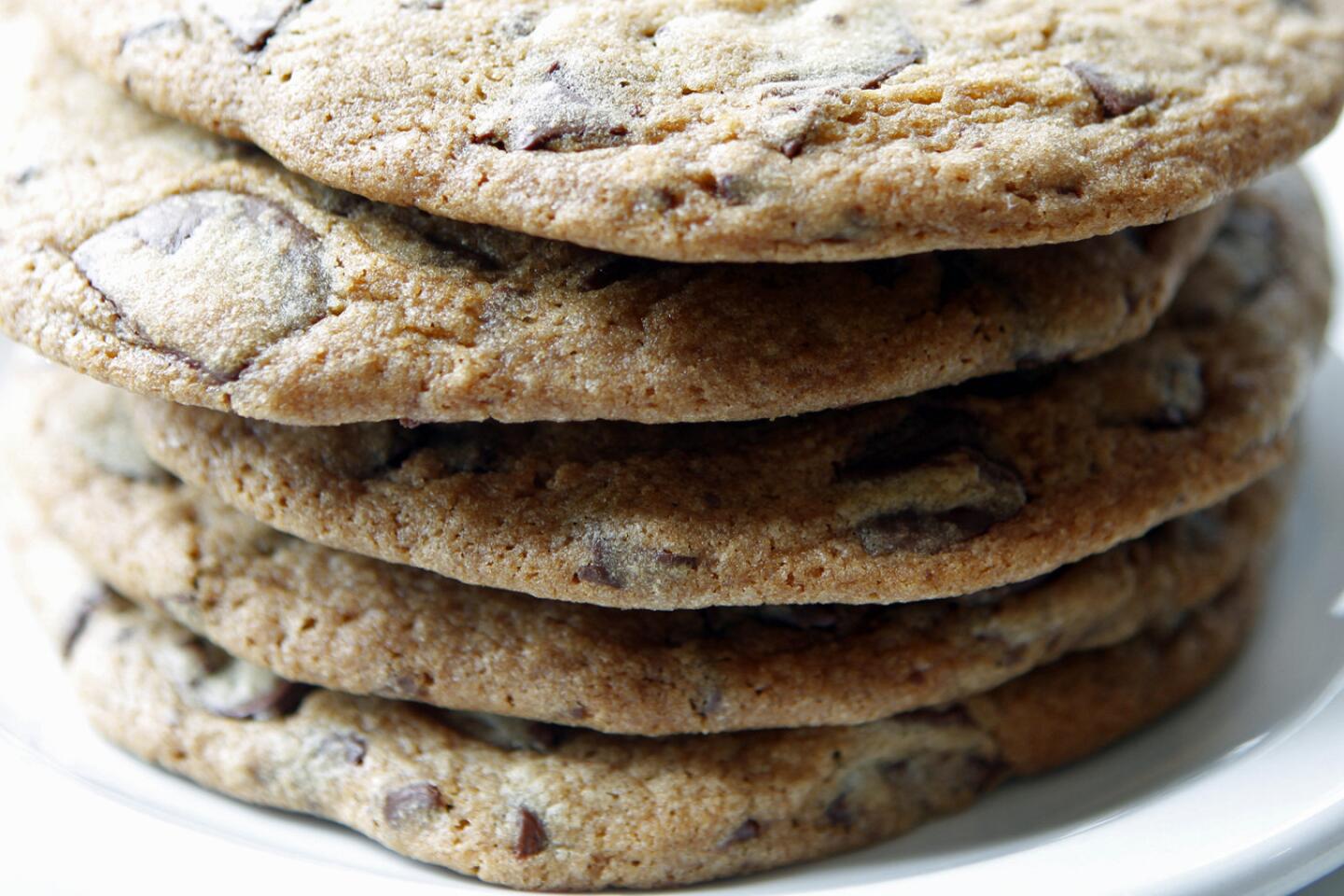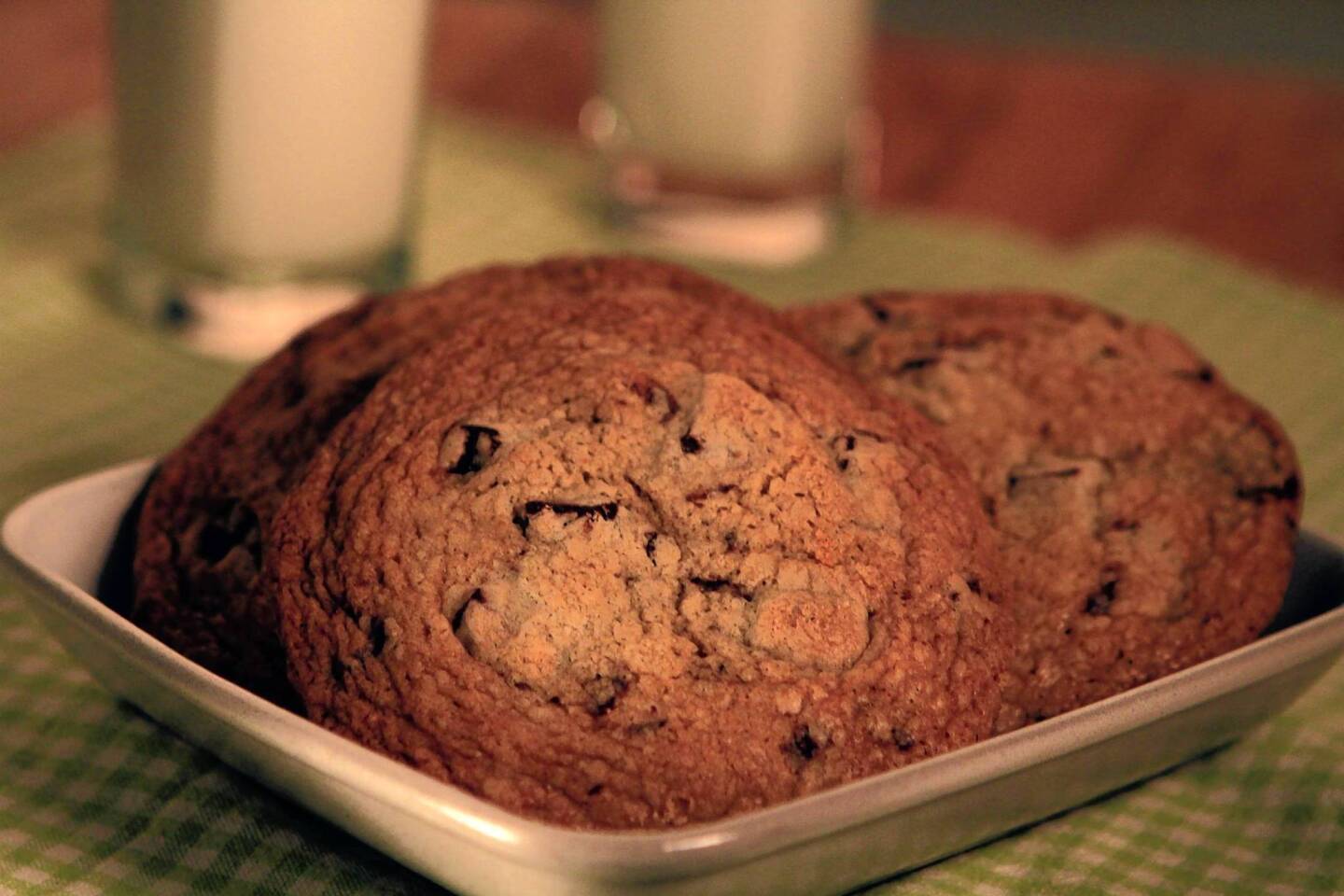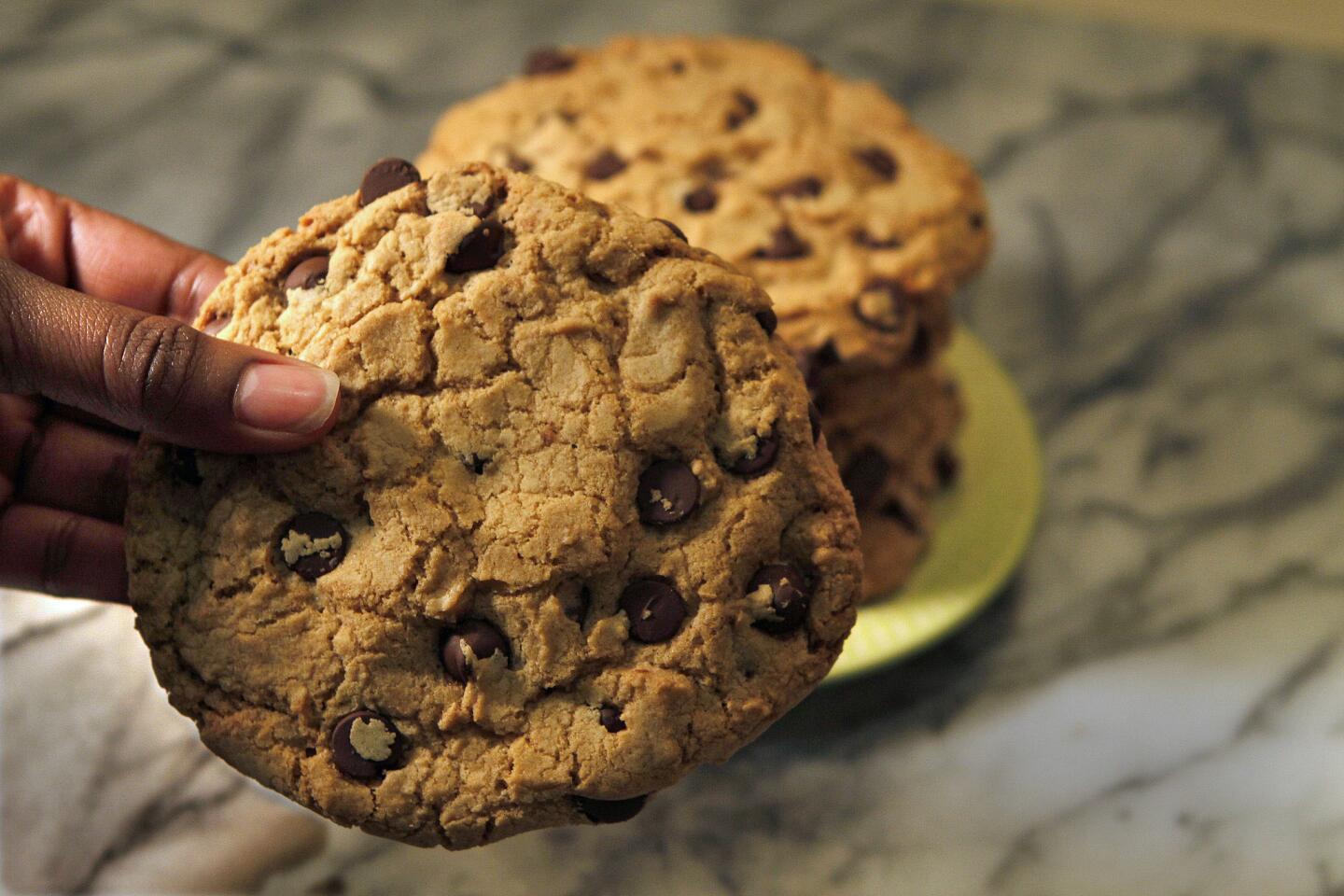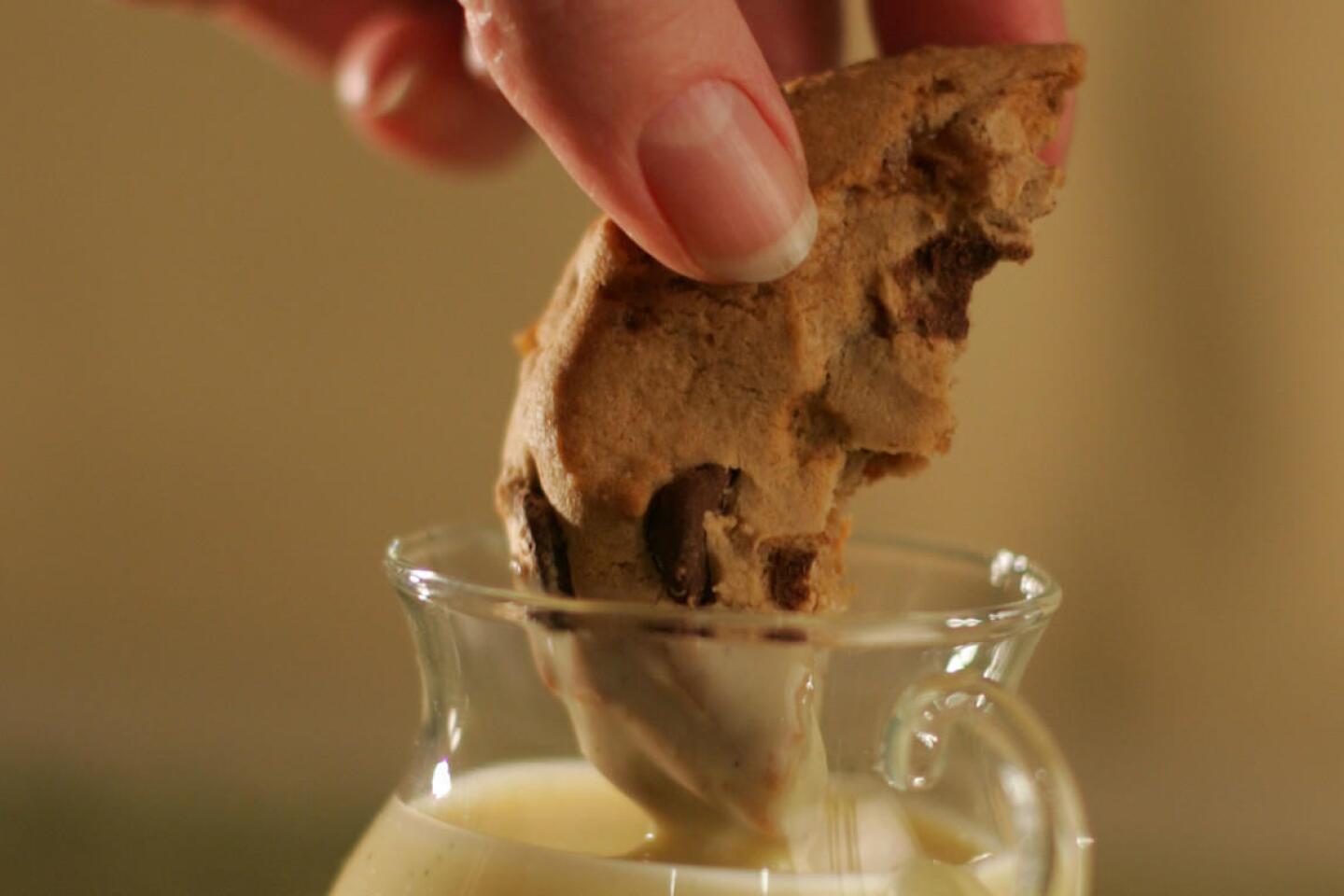Chocolate Chip Cookie Day: Celebrate with 5 recipes!
- Share via
Happy National Chocolate Chip Cookie Day! Whether you’re more of a crisp and crumbly kind of fan, or you prefer yours soft and chewy, this all-inclusive celebration requires only one thing: a sweet tooth. Oh, and plenty of chocolate.
Ever wonder how the chocolate chip cookie came to be?
The cookie was created in the 1930s by Ruth Wakefield at the Toll House Inn in Whitman, Mass. According to Nestle, Wakefield added bits of chopped chocolate to a batch of butter cookie dough, expecting the chocolate to melt into the cookies as they baked. To her surprise, the chocolate held its shape. The chocolate chip cookie was born, and history was made.
So what makes a cookie crisp or chewy? A large number of factors -- ratio of ingredients, size of the cookie, oven temperature and baking times -- can play into the spread and final texture of a cookie.
Fat is often key to texture, with recipes typically calling for butter, margarine or shortening: Butter-based cookies typically tend to be more crisp than those made using shortening (butter has a lower sharper melting point and can cause the dough to spread, shortening melts at a higher temperature to generally give cookies crisp edges and chewy centers), while margarine-based cookies often vary depending on the amount of water in the fat. Keep in mind that the type of fat used will also affect flavor.
Eggs are also important, whole eggs helping to puff up the cookie and soften texture. Substituting an egg white for a whole egg can increase the crispness of the final cookie.
Type of sugar can affect texture -- brown sugar in a recipe will often help cookies spread and stay moist after baking.
Leaveners: In addition to providing lift to the cookie, leaveners (baking powder and soda) are often added to neutralize the acidity of the dough, helping to brown the cookies as they bake.
Oven temperature: The higher the temperature, the richer the browning of the cookie and the faster the dough will set.
Chilling the dough: Chilling the dough will allow the heat from the oven to set the crust before the dough is fully melted, setting the outer crust before the cookie has spread too much.
But enough science! To celebrate, we’ve compiled 5 of our favorite chocolate chip cookie recipes. Whether you like crisp or chewy, extra-large or extra-chocolaty, we’ve got you covered!
So whip up a batch of cookies, and salute the holiday with a big glass of milk. Cheers!
ALSO:
Mac ‘n’ cheese recipes galore!
Behind the scenes at the Test Kitchen
You can find Noelle Carter on Facebook, Google+, Twitter and Pinterest. Email Noelle at noelle.carter@latimes.com.
More to Read
Eat your way across L.A.
Get our weekly Tasting Notes newsletter for reviews, news and more.
You may occasionally receive promotional content from the Los Angeles Times.
















